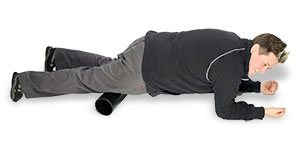Preparing for Life and Activity
Use the first part of class to help participants return to neutral body positions.
This generic warm-up targets muscle groups that tend to shorten with life’s habits and patterns. Currently, the general population is trending toward more sedentary lifestyles, making the seated position dominant for most Americans. While instances of unilateral dysfunction and tightness will need special attention, these general corrective strategies will help most attendees and prepare them for your customized class.
Balancing Act
Most participants will have shortened calf muscles, quads, hip flexors and latissimi dorsi, which may create an anterior pelvic position that lengthens the hamstrings and abdominal complex. This leads to overuse of the lower back and hamstrings and underutilization of the gluteal muscles, transversus abdominis and overall coordination of the posterior oblique subsystem, which is the main stabilization mechanism for the sacroiliac joint.
This mechanical shortening and underutilization of certain muscles can lead to a biomechanical position that leaves an individual susceptible to injury. The corrective principles in this warm-up include a quick inhibition of muscles with a foam roller or similar device, a lengthening process using static stretches, and then dynamic lengthening requiring more core and stability control so that the body is balanced and ready for pain-free movement. Here are the guidelines:
Self Myofascial Release: Quadriceps and Hip Flexors
- Using foam roller or similar equipment, find at least two tender, tight spots on lateral aspect of each quadriceps (rectus femoris, in particular), and focus there for 30–60 seconds. This should inhibit the hip flexor complex enough to restore pelvic positioning.
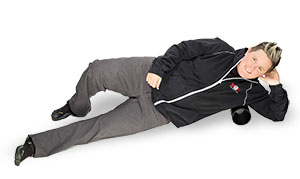
Self Myofascial Release: Latissimi Dorsi
- Using foam roller underneath arm and shoulder, find one spot on each lat (near attachment at humerus) where roller can relax into muscle, and allow muscle spindles to reset to longer length.
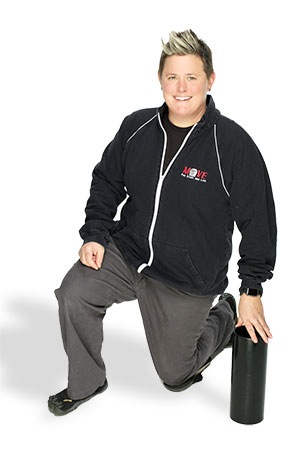
Static Stretch: Quadriceps and Hip Flexors
- Place one knee on ground and draw opposite leg forward. Each knee is at 90-degree angle.
- Tuck hips and squeeze gluteals while performing posterior tilt.
- Move hips slightly forward until slight stretch is felt.
- Do not arch back.
- Hold for 30 seconds, each side.
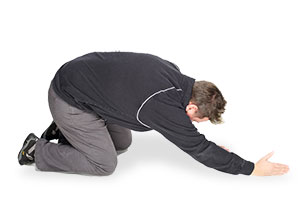
Static Stretch: Latissimi Dorsi (on Wall or Floor)
- Start in modified child’s pose, arm extended on ground above head.
- Point thumb toward ceiling.
- Turn palm-side of hand upward and lean torso back a little to initiate stretch.
- Draw abdominals in.
- Hold for 20–30 seconds.
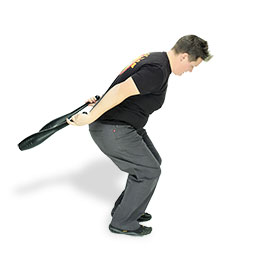
Dynamic Full-Body Stretches (Multidirectional)
Weighted Squat Swings
- Hold 2- or 3-pound dumbbell or clubbell (pictured) in each hand.
- Start in squat position, weights lowered by pelvis.
- As you extend, lift weights above head.
- Repeat swings for 90 seconds, multiple sets.
- Make sure weights move at own pace (pendulum-style) to get maximum fascial response.
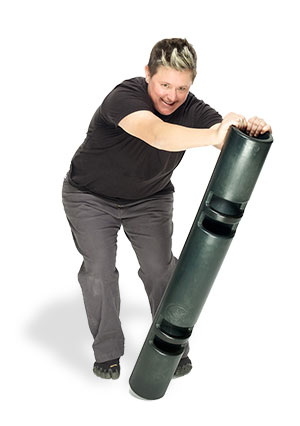
Reach-Outs
- Place weighted stick or ViPR™ on floor approximately 6 inches from feet. Hold onto top portion with both hands.
- Extend device forward while lowering into squat, and bring device back while returning to standing.
- Squeeze gluteals and engage abdominals while extending.
- Reach to right while swinging hips left.
- Repeat 90 seconds, multiple sets.
- Repeat on other side.
If you’d like to see some of these moves in action, visit www.ideafit .com/april-ignite-sample.´┐╝
